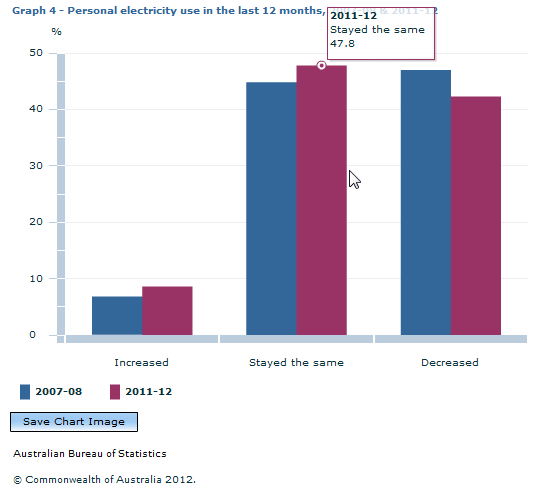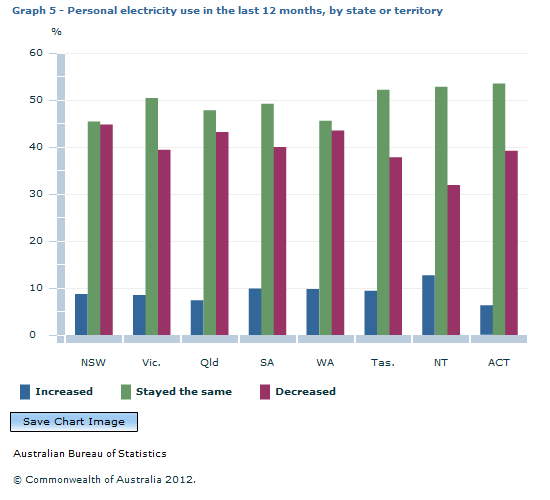4626.0.55.001 - Environmental views and behaviour, 2011-12  Quality Declaration
Quality Declaration
ARCHIVED ISSUE Released at 11:30 AM (CANBERRA TIME) 11/12/2012
Page tools:
 Print Page Print Page
 Print All Print All
| ||
In 2011–12, 89% of Australians took steps to limit their personal electricity use. This was relatively consistent across all Australian states and territories, with the exception of the Northern Territory where 79% of people had taken steps to limit their personal electricity use. Australians aged 18–24 were less likely to limit their personal electricity use, with 79% having taken steps compared with 92% of Australians aged 35–74 years. (Tables 4 and 5) For the 11% of Australians who did not take steps to limit their personal electricity use, nearly a third (32%) said it was because their electricity consumption was already low enough. (Tables 4 and 6) The proportion of Australians who decreased their electricity use was lower in 2011–12 (42%) compared with 2007–08 (47%). Furthermore, electricity use for 48% of Australians in 2011–12 had stayed the same compared with 45% in 2007–08. (Table 1 and Graph 4)  Source(s): Environmental views and behaviour Among the states and territories, electricity use for more than half of Australians living in the Australian Capital Territory (53%), the Northern Territory (53%), Tasmania (52%) and Victoria (50%) had stayed the same. The proportion of Australians whose personal electricity use had decreased varied between states and territories ranging from 32% in the Northern Territory to 45% in New South Wales. (Table 5 and Graph 5)  Source(s): Environmental views and behaviour Of the estimated 7.2 million Australians who decreased their electricity use, the most common reasons were trying to conserve energy (63%) and cost saving (37%). The reasons people's personal electricity use had decreased were similar across all states and territories. (Table 8) The factors that influenced Australians when making a purchase varied depending on the appliance:
Document Selection These documents will be presented in a new window.
|
||
